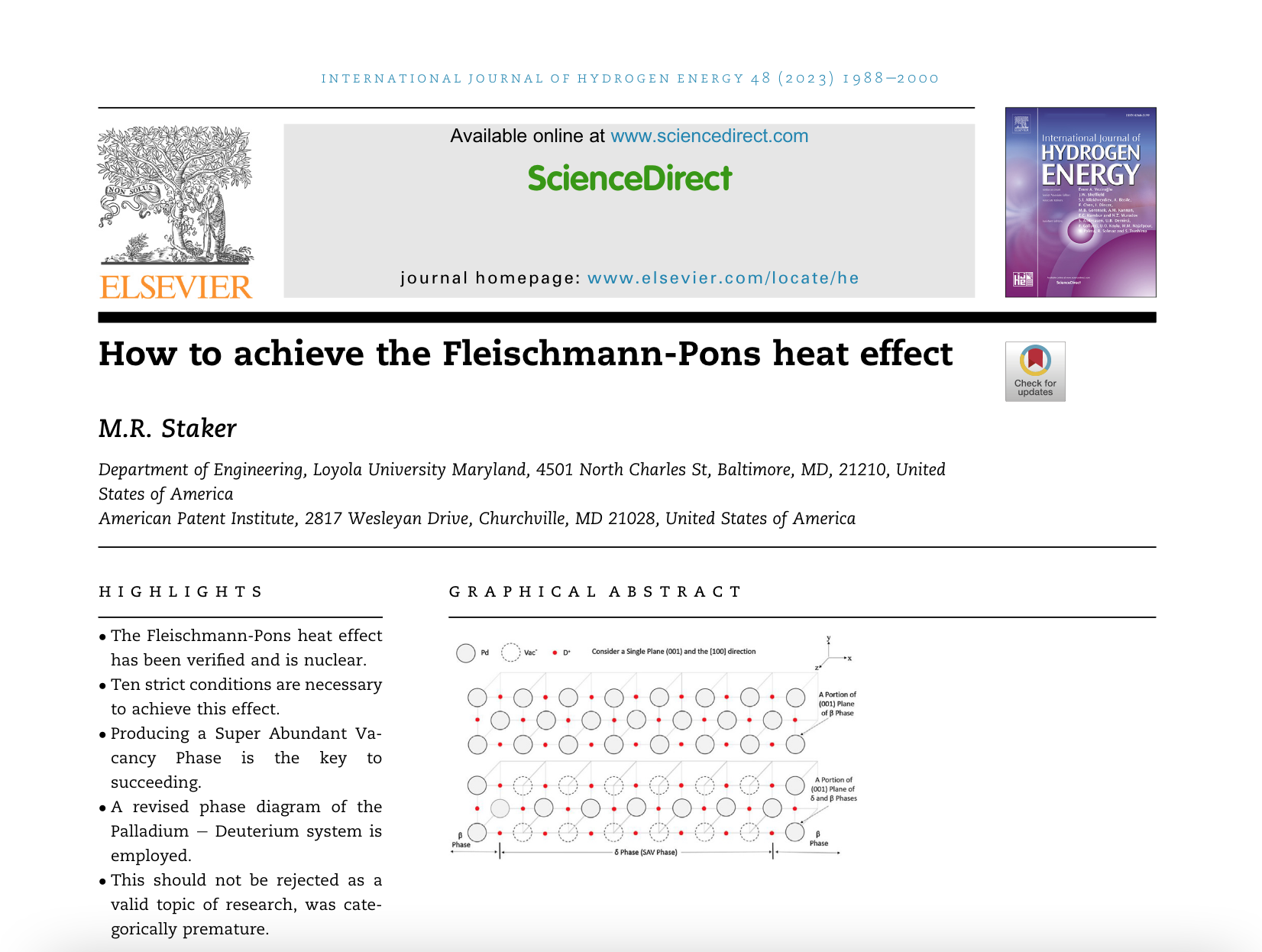
Low energy nuclear reactions (LENR), often called “cold fusion,” was one of the most notable discoveries of the 20th Century, holding the promise of unlimited clean energy. However, because the research published by Pons and Fleishmann in 1989 could not easily be understood or reproduced, it was cast aside by the wider scientific community, except for a small group of determined scientists. Since then, this resolute group has worked outside the mainstream, endeavoring to establish a sustained nuclear fusion reaction at room temperature.
This October, Dr. Michael R. Staker, Affiliate Associate Professor at Loyola University and MIT PhD in Materials Science and Engineering, published a paper in the International Journal of Hydrogen Energy.. It cites LENR with a verified energy source, multiple applications, and a theory of the mechanisms and criteria for initiating new types of nuclear reactions proving the Fleishmann-Pons heat effect.
Staker’s methodology
To test the theory that cold fusion produces nuclear energy, Staker designed a calorimeter for electrolysis of Pd in heavy water with a precision of +/- 0.5%. It exhibited excess power levels between 20 and 240 W/cm3 accompanied by excess heat of 150 MJ/cm3 or 14,000 eV/atom of Pd for a 46-day period, corroborating Pons and Fleishmann’s original findings and verifying a nuclear source.
To back up his findings, Staker conducted control experiments using Pt/H2O, as well as an additional control experiment using Pd/D2O. The control experiments did not produce the Fleischmann-Pons heat effect because none had the vital conditions. His paper outlines the 10 hard-to-achieve but necessary conditions for creating a measurable Fleischmann-Pons heat effect. When all the conditions were met, Staker’s experiments resulted in 100% reproducibility.
Progress in an underexplored field
In his paper, Staker offers reasons for ambiguity in the field and adds insights into underexplored parameters. He states, “Motivated by premature judgements, conditions required before ruling out, curious why reproductions failed, and to exclude prejudice, this research presents new experiments indicating an incomplete story.”
Staker concludes that much interesting science remains to be done in this underexplored space. He believes the methods presented in his study, if carefully and faithfully followed, constitute a reference experiment that the field has been seeking for decades. More about Staker’s methodology, including the 10 necessary conditions he discovered for reproducing Pons and Fleishmann’s findings, can be found here .